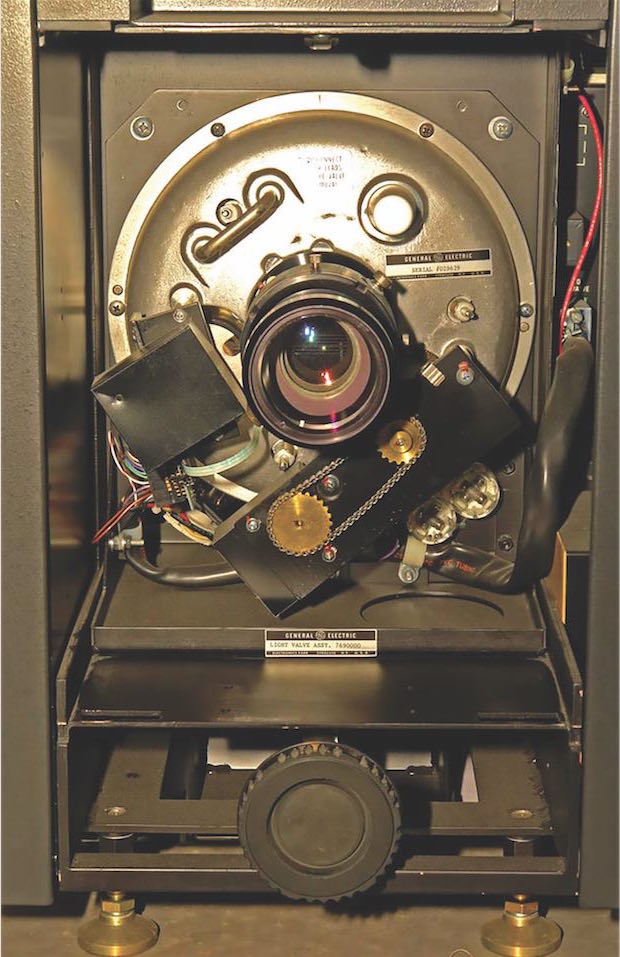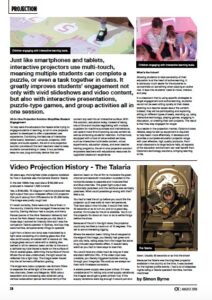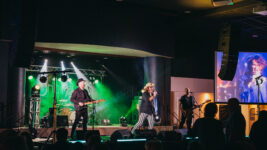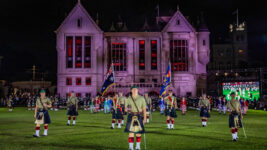News
22 Oct 2018
Video Projection History – The Talaria
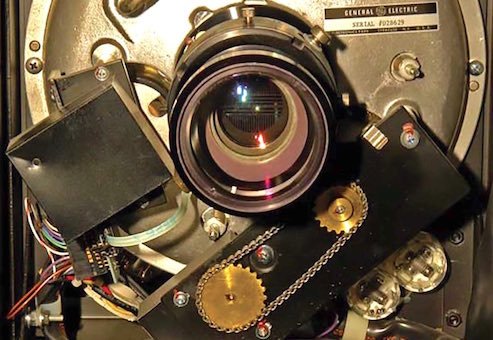
Subscribe to CX E-News
PROJECTION
Video Projection History – The Talaria
by Simon Byrne.
30 years ago, the brightest video projector available for hire in Australia was the General Electric Talaria.
In the late 1980s they cost about $180,000 and produced a massive 1,500 lumens! Yes, a $180,000, 75 kilogram machine produced less light output than your cheapest office LCD projector that you’d pickup from Officeworks for $1,000 today. The image was pretty rough too!
If I recall correctly, there were only five of them in the country. Intercity Hire managed three across the country, Darling Harbour had a couple, and Kerry Packer (owner of the Nine Television Network) had one at his Palm Beach house (as you do).
Back in those days I worked for Intercity Hire and I was the company’s Talaria operator in Sydney. And boy they were horrible, temperamental things to operate! Light from a Xenon arc lamp was modulated by a light valve consisting of a rotating glass disc that was continuously re-coated with a viscous oil.
Yes, a large glass vacuum valve with a rotating disc bathed in oil!
An electron beam similar to the one in a cathode ray tube traced a raster on the surface of the oil coated glass, deforming the surface of the oil. Where the oil was undisturbed, the light would be reflected into a light trap. The image raster traced into the oil formed a diffraction grating.
The single lens colour projector use dichroic filters to separate the white light of the xenon bulb in
two channels, Green and Magenta. RGB colour separation and processing was obtained using vertical wobbulation (actual technical term) of the electron beam on the oil film to modulate the green channel and sawtooth modulation is added to the horizontal sweep to separate and modulate Red and Blue channels.
The green light output was horizontally polarised, and the red/blue was vertically polarised. What could possible go wrong with that?
Well a lot.
You had to heat the oil up before you could fire the projector up (it was solid at room temperature). That took about nine minutes. It would then take 45 seconds or so to turn on, and on a good day, another 10 minutes for the oil to stabilise. You’d run the projector for about an hour or so to settle things before the show.
Because of the oil in the light valve, the projector could only be tilted a maximum of 15 degrees. This led to some interesting rigging. Where the electron beam hitting the oil stopped at the edge of the image, you literally had green and pink oily trails, tailing away from the image like some drug induced psychedelic effect. It looked really weird so you had to have ways to lose that.
You could have any video input as long as it was standard definition PAL. If the video input was unstable, you literally triggered bubbles moving through your image (so 70’s cool) so we always ran them with timebase correctors. A stable power supply was super critical. If it was unstable (and I’m talking only small supply variations) the images would get a green pinkish hue.
If the supply variations were big enough it would just shutdown. Usually 30 seconds or so into the show! Because the Talaria was the brightest projector available in the country at the time, it was booked for the highest profile events. I had a lot of sleepless nights being a Talaria operator!
Horrible, horrible machines!
This article first appeared in the October 2018 edition of CX Magazine – in print and online. CX Magazine is Australia and New Zealand’s only publication dedicated to entertainment technology news and issues. Read all editions for free or search our archive www.cxnetwork.com.au
© CX Media
The October 2018 edition CX Magazine was about ‘Projection’. Read more:
Creative Projection Mapping with TDC’s Pete Lynn
Antartica – While You Were Sleeping
Choosing the Best Projector
Technology Engages Students in Learning
From Projector to Plate – Encore Serve up a Sensory Feast
3D Modular Panels for Projection Mapping
Borderless Projection in the Age of LED
Video Projection History – The Talaria
Simon Byrne: Let There Be Projected Light
Duncan Fry: Snow Job – The Projector from the Smithsonian
Subscribe
Published monthly since 1991, our famous AV industry magazine is free for download or pay for print. Subscribers also receive CX News, our free weekly email with the latest industry news and jobs.

